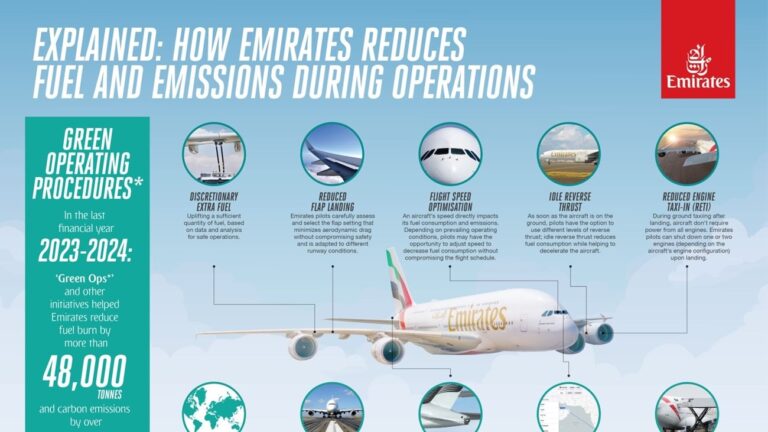Emirates embarked on implementing “Green Operating Procedures” (Green Ops) in 2016, taking a multi-pronged approach that looks for opportunities to reduce on-ground and in-flight fuel use, in addition to providing pilots with the necessary education, awareness, data analytics and technology to help them manage their flights as efficiently as possible.
In a report released today titled ‘How Emirates pilots reduce fuel emissions during operations’, the airline highlighted its efforts, led by an internal cross-functional Operations Efficiency Steering Group, to mitigate unnecessary fuel burn and emissions wherever possible, while ensuring the highest safety standards embraced by Emirates are never compromised. In the last financial year 2023-2024, ‘Green Ops’ and other operating initiatives helped Emirates reduce fuel burn by more than 48,000 tonnes and carbon emissions by over 151,000 tonnes.
Captain Hassan Al Hammadi, Emirates’ Divisional Senior Vice President Flight Operations, said, “We’re proud of the work done across the Flight Operations team, and the contributions of our pilots in significantly reducing fuel consumption and emissions. This could have only happened through collective discipline, commitment, and dedication to sustainable aviation practices in the cockpit, all while maintaining the highest levels of safety.
“We’ve equipped our pilot community with the latest tools and applications to monitor and review their flight performance, helping them to improve their awareness of how their flying techniques impact fuel consumption and emissions. We’ll continue to invest in cutting-edge technologies and accelerate solutions that yield long-term environmental benefits.”
Some of the key operational measures include Discretionary Extra Fuel, Flight speed optimisation, Reduced flap landing, Idle reverse thrust, Reduced engine taxi-in (RETI), Optimised flight routings, Technology and Innovation – Flight Pulse, Centre of Gravity Optimisation, APU Usage, and Adjusted potable water uplift.
WAM



